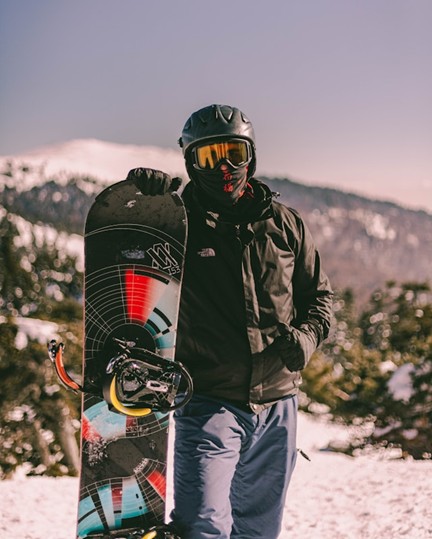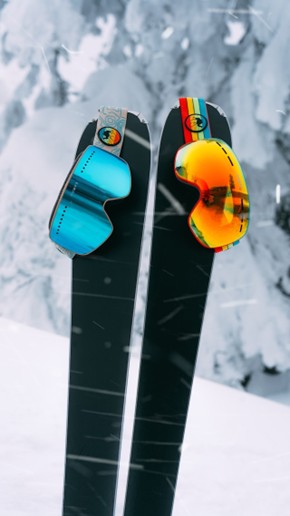
As the first hints of winter approach, skiers and snowboarders eagerly anticipate hitting the slopes. But before strapping on boots and clipping into bindings, a little preparation can make all the difference for a safe, comfortable, and exhilarating season. Pre-season maintenance, proper gear checks, and thoughtful planning not only boosts performance but also helps prevent accidents, equipment failures, and unnecessary stress on the mountain. Many riders turn to trusted ski shops for expert advice and tune-ups, ensuring their gear is slope-ready. This ultimate pre-season checklist is designed to help you maximize every run, whether you’re a seasoned enthusiast or a beginner gearing up for your first winter adventure.
Start by carefully inspecting your skis or snowboard. Check for visible damage such as deep scratches, cracks, or delamination, which can compromise performance or safety. Examine the edges for rust or dullness; sharp edges are critical for controlling turns and navigating icy patches. If edges are worn or damaged, plan to have them professionally sharpened or repaired before the season begins.
Snowboards should also be checked for core shots, base damage, and the condition of inserts. A damaged base can negatively impact glide and control, while loose inserts may affect binding performance. Even minor repairs performed early can prevent bigger issues on the slopes.
Bindings are the connection between you and your equipment, making them one of the most important components to inspect. Look for loose screws, worn or cracked parts, and proper function of the release mechanisms. Ensure your bindings are mounted correctly for your boot size and adjusted to your weight, skill level, and riding style. Pre-season is the ideal time to have a professional technician check DIN settings or reset them for your current needs, providing both safety and confidence on the mountain.
Ski and snowboard boots deserve particular attention, as comfort and performance depend heavily on a proper fit. Inspect the shells for cracks or excessive wear and examine the liners for compression or damage. Test the buckles, laces, and BOA systems to ensure smooth function. If liners have compressed significantly over the last season, consider replacing them to maintain support and warmth. Custom footbeds or insoles can also make a significant difference in comfort and control.
A smooth, well-maintained base improves glide and responsiveness. Clean and wax your skis or snowboard before the season begins, even if they were stored in a climate-controlled space. Removing old wax, dirt, and oxidation sets the stage for optimal performance. Applying a fresh coat of wax appropriate for the temperature and snow conditions you expect can improve speed, control, and durability. For those seeking professional results, a full base grind or stone grind can remove minor scratches and restore optimal smoothness.
Edges dictate your ability to carve turns and maintain control on icy terrain. Pre-season edge tuning, whether a simple sharpening or a full bevel adjustment, ensures that your equipment reacts consistently. This is particularly important if your skis or snowboard spent the offseason in storage, as edges can oxidize or dull over time. Properly tuned edges also reduce the risk of slipping or catching unexpectedly during aggressive turns.
Safety should never be overlooked. Inspect your helmet for cracks, dents, or signs of impact from the previous season. Even minor impacts can compromise structural integrity. Ensure straps and buckles are in good working order and that the helmet fits snugly without excessive movement. Consider upgrading to a helmet with MIPS (Multi-directional Impact Protection System) for additional protection against rotational forces.
Goggles protect your eyes from glare, UV rays, wind, and snow. Examine lenses for scratches, cracks, or fogging issues. Anti-fog treatments and lens replacements can dramatically improve visibility and reduce eye strain. Consider multiple lenses for varying light conditions, including low-light, overcast, and bright sunny days.
Cold, wet hands and body parts can quickly turn an enjoyable day on the slopes into a miserable experience. Inspect your gloves, jackets, and pants for tears, worn insulation, and compromised waterproofing. Re-waterproof jackets and pants as needed and consider layering options that balance warmth with breathability.
For backcountry enthusiasts, pre-season is an ideal time to check avalanche safety equipment. This includes transceivers, probes, shovels, and backpacks. Batteries should be replaced, and devices tested to ensure proper functionality. Consider refreshing your avalanche safety knowledge or taking a course to remain vigilant and prepared.
Skiing and snowboarding demand strength, flexibility, and endurance. Pre-season conditioning helps reduce the risk of injury and improves performance. Focus on exercises that target the legs, core, and lower back. Squats, lunges, and balance drills strengthen key muscle groups, while yoga and dynamic stretching enhance flexibility and reduce stiffness.
Endurance on the slopes requires a solid cardiovascular base. Activities such as running, cycling, or swimming help build stamina for long days of skiing or snowboarding. Incorporating interval training can mimic the bursts of activity experienced during downhill runs.
In addition to strength and cardio, mobility is crucial for fluid movements and injury prevention. Dynamic warm-ups before heading to the slopes and consistent stretching routines during the off-season help maintain flexibility and support quicker recovery.
Before your first day on the mountain, review weather forecasts and snow conditions. Knowing what to expect can guide your choice of gear, layers, and accessories. Early preparation allows you to avoid unnecessary stress and ensures that you maximize your time on the slopes.
Organize a ski bag or backpack with essentials such as sunscreen, lip balm, water, snacks, and extra layers. Having these items readily available improves comfort and reduces the likelihood of interruptions during your runs.

Many resorts offer early-bird lift tickets or reservations for peak days. Purchasing tickets and booking accommodations in advance saves time, guarantees access, and may even provide cost savings.
Proper off-season storage is just as important as pre-season preparation. Ensure your skis, snowboards, and boots are stored in a cool, dry place away from direct sunlight. Remove bindings if recommended and avoid placing heavy objects on equipment to prevent warping. Off-season waxing or protective covers can prolong the life of your gear and reduce maintenance needs at the start of the next season.
While many pre-season tasks can be handled at home, professional services ensure optimal performance and safety. Local shops offer tuning, edge sharpening, base repair, and full-service packages that can extend the life of your equipment and maximize your experience on the slopes. Investing in a professional tune-up can save time, reduce frustration, and allow you to focus on enjoying your ski or snowboard season from the very first run.
Mental readiness is often overlooked but just as important as physical preparation. Reviewing trail maps, setting realistic goals, and establishing safety strategies helps reduce stress and enhances confidence. Visualization techniques, mindfulness, and goal-setting can improve focus and enjoyment on the slopes, making the season not only safer but more rewarding.
Pre-season preparation is a crucial step for anyone serious about skiing or snowboarding. From inspecting and maintaining your equipment to fine-tuning physical fitness, safety gear, and mental readiness, thorough planning ensures a smoother, safer, and more enjoyable season. Checking your skis and snowboard, boots, and bindings, alongside smart planning for weather, storage, and professional services, allows you to focus on what matters most: the thrill of the mountain and the joy of carving through fresh snow.
By following this ultimate pre-season checklist, skiers and snowboarders can minimize risks, maximize performance, and set themselves up for a season filled with fun, adventure, and memorable moments on the slopes. Whether you are a seasoned enthusiast or a first-timer, preparation is the key to a successful winter season.